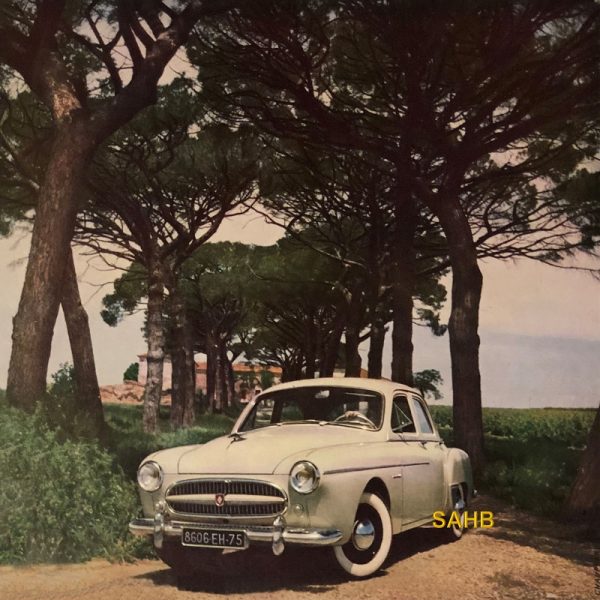
The post-war Renault 4CV, Dauphine and R4 saw considerable success, as France returned to prosperity after the war and demand grew for modest but effective personal transport. The 4CV (1947-1961) was the first French car to sell over a million units. It successor the Dauphine (1956-1967) responded, with some more space and luxury, to the increased French standard of living and sold over two million. And the R4 (1961-1994), designed to slot into the Renault range below the Dauphine, achieved a staggering eight million.
The Renault Frégate was created as a modern and more upmarket post-war model, both to improve Renault’s image and to cater for more middle-class customers. Sadly, even allowing for the lower numbers expected for such a model, the Frégate was not a sales success. One possible reason lies in the rushed development of the car and resultant reliability issues; it was initially designed to have the engine at the rear but in 1949, late in the design process, Renault decided on a front-engined layout.
The Frégate was unveiled at the 1950 Paris Motor Show, but the first model was not delivered until November 1951. Production built up only slowly: in 1953 the Frégate sold only 25,000 units against 35,000 for the standard wheelbase versions of Citroën’s ’11 Normale’ model, a design that was effectively fifteen years old.
There was nothing wrong with the styling of the car. Produced in-house by a team led by Robert Barthaud, it appealed to both journalists and the public, as did its commodious interior (a true six-seater), its handling (independent suspension all round) and its effective hydraulic brakes.
The problems started with its engine. A 2-litre 4-cylinder, it delivered an anaemic 56 horsepower, only enough for a maximum speed of just over 80 mph. By 1954 this had reached 65 horsepower, but the car was always too heavy at 1,235 kg. The reliability problems were even worse: it took until 1953 for these to be resolved.
In 1955 the Frégate received a new 2,141cc engine that eventually put out 80 horsepower. That same year saw the launch of the deluxe Grand Pavois version and the Domaine estate car. But in 1955 Citroën launched the legendary DS and Peugeot its 403 – and Ford passed its new V8 Vedette over to Simca. Fierce competition indeed.
Renault did what they could. In 1957 came a fully synchromesh gearbox and an optional three-speed ‘Transfluide’ semi-automatic transmission with a fluid coupling, but thereafter came a slow decline, and in 1960 production was stopped after sales of only just over 180,000 (some sources say nearer 160,000). It was not until 1965 that Renault managed to return successfully to this sector of the market, with the hatchback Renault 16.
Image courtesy of The Richard Roberts Archive: www.richardrobertsarchive.org.uk







Leave a Comment